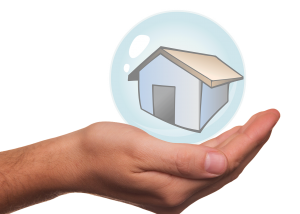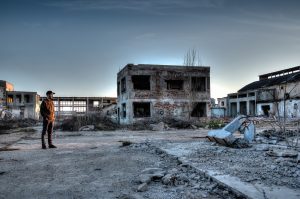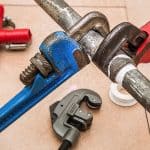Let’s be realistic, wherever you live, at least one of many natural disasters will probably hit your area at some point in the future. These extreme weather conditions include hurricanes, tornados, snow, fires, floods, earthquakes, etc. The probability of disasters affecting your home depends on your location but it always exists. Since no home is indestructible, we all have to take safety measures to make sure we don’t lose everything we own. The best way to protect your property is having a good insurance policy that covers all sorts of damage. A-Z Claims Adjusters can help you get the compensation you deserve.

Which natural disasters does your basic homeowners policy protect you from?
After disaster strikes, you need to make repairs and replace what is lost. Insurance policies will provide you with the financial resources to do it, however, they all have their limitations. It is important to learn which natural disasters a basic homeowners policy covers before it is too late.
Perils that are covered
- Fire or lightning
- Smoke
- Windstorm or hail
- A weight of snow, ice or sleet
- Damage caused by a falling object(s)
Perils that are not covered
- Earthquakes and other earth movements, such as landslides and similar natural disasters
- Hurricanes
- Floods and other water damage

Wildfires
This natural disaster is among those covered by standard insurance. The only thing to be careful about is whether the coverage your policy provides is sufficient. Unfortunately, most people have to rebuild their entire house from the ground up after a wildfire. Homeowners without insurance have no choice but to rent or seek charitable aid and borrow money to repair their homes. Plus, the new homes they build are usually smaller and cheaper than the previous ones. Furthermore, if you live in a forested or mountainous area, your insurers will probably require that you take precautions against wildfires. Those precautions may include a roof made of fire-resistant materials or removing anything around your home that could act as fuel for an advancing fire.
Earthquakes
Those who live in Nevada, Alaska, Washington, California, Hawaii, Utah, Oregon, Idaho, Wyoming, and Montana experience more earthquakes than others. A standard insurance policy does not cover damage caused by earthquakes. If the location of your home is at high risk of earthquake loss, your insurance coverage will be more limited. If you do obtain it, you will probably have to prove that your home has been bolted to its foundation before an insurer extends this sort of coverage. This kind of renovation could cost up to $6,000, depending on the size, location, and style of your home. In addition, you might have to agree to a property inspection. Luckily, earthquake coverage is relatively accessible. You can purchase it through mainstream insurers.
Tsunamis
Standard homeowners insurance is not likely to protect you from this natural disaster, either. You’ll need to purchase another insurance policy. Compared to earthquake coverage, these policies are less accessible but more affordable. Your policy should not have an “anti-concurrent clause” because this clause limits coverage in case the damage is caused by multiple factors, for example, wind and water.
Severe thunderstorms
Although there’s no protection from thunderstorms per se, your basic insurance will cover property damage caused by different elements of a thunderstorm such as hail or lightning. For instance, if lightning starts a fire or hail damages your roof, your policy covers it. Hail damage is greater than tornado damage. In comparison to tornadoes, hail is a more common natural disaster covering a larger area.
Tornadoes and high winds
Tornadoes also cause a lot of damage each year. Around 1,200 tornadoes hit the USA per year! Your homeowner’s insurance claim is likely to cover tornado damage.
Similarly, the damage that results from high winds is mostly addressed by your standard homeowner’s policy under the section “windstorm peril”. For example, if a tree damages your house after the wind knocks it down, the insurance covers repair costs. However, if the tree does not damage your property, the insurance does not cover any costs.
Volcanoes
Volcanoes among the natural disasters covered by standard homeowners insurance. Still, in case tremors, landslides, and shock waves resulting from a volcanic eruption cause damage to your home, you need insurance against those specific phenomena. That would be earthquake insurance in this case.
Hurricanes
Insurers who work in states at high risk of hurricanes sell insurance policies that give up the traditional dollar-based deductibles in favor of percentage deductibles. These kinds of deductibles are based on the value of the home and often divided into two categories – one that focuses on hurricane-specific damage and one that focuses on damage caused by other incidents involving heavy winds. However, a standard policy does not cover flood damage even if it results from a hurricane. In that case, a separate flood policy or an additional endorsement can be helpful.

Floods
Many people find it surprising that a basic insurance policy does not cover flood damage. Unfortunately, floods are the most common natural disaster in the country. Therefore, insurance against flooding is a must, especially if you live in a flood-prone area. If your home is in one of those regions and you got your mortgage from a federally regulated or insured lender, purchasing flood insurance through the National Flood Insurance Program will be mandatory. You can still buy it even if your home is not in a high-risk area but only from the NFIP.
Snow
Another common natural disaster in many states is snow. Your average homeowner’s policy should have you covered if your property suffers damage caused by snow, blizzards and strong winds related to it. Nevertheless, in certain situations, your coverage does not protect you. For example, if the melting snow causes floods or if the pipes burst due to low temperatures you’ll have to pay for the damage. So, remember to maintain the temperature in your home above a certain degree and consider buying a flood policy through NFIP.





